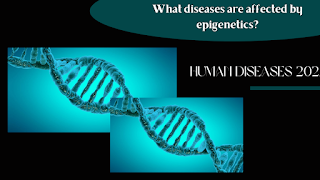How can epigenetics be used to treat cancer?
Epigenetic medication appears to figure well with radiation
and therapy. The medication could create cancer cells a lot of sensitive to
those therapies, creating them work higher and a lot of possible to stop cancer
from returning. Your doctor can even use over one epigenetic drug at a time. Additionally
to the genetic alterations, determined in cancer cells, square measure
mitotically transmissible changes in organic phenomenon not encoded by the
polymer sequences, that square measure noted as epigenetic changes. Polymer
methylation is among the foremost studied epigenetic mechanisms at the side of
numerous simple protein modifications concerned in chromatin granule
remodelling. As opposition genetic lesions, the epigenetic changes square
measure probably reversible by variety of little molecules, referred to as
epi-drugs. This review can concentrate on the biological mechanisms underlying
the epigenetic silencing of neoplasm suppressor genes determined in cancer
cells, and also the targeted molecular methods that are investigated to reverse
these aberrations. Specifically, we'll concentrate on polymer
methyltransferases (DNMTs) and simple protein deacetylases (HDACs) as
epigenetic targets for cancer treatment. A synergistic result of a combined use
of DNMT and HDAC inhibitors has been determined. Moreover, epi-drugs sensitize
multiple completely different cancer cells to an oversized sort of different
treatment methods.
Gene transcription is activated or strangled by a reversible
modification of the gene; this modification is termed associate epigenetic
amendment. This account of epigenetics in cancer reviews the mechanisms and
consequences of epigenetic changes in cancer cells and concludes with the
implications of those changes for the designation, prognosis, and treatment of
cancer. the invention of various hypermethylated promoters of tumour–suppressor
genes, together with a much better understanding of gene–silencing mechanisms,
has emotional polymer methylation from obscurity to recognition as another
mechanism of tumour–suppressor inactivation in cancer. Epigenetic events can even
facilitate genetic injury, as illustrated by the exaggerated mutagenicity of
5–methylcytosine and also the silencing of the MLH1 twin repair cistron by
polymer methylation in body part tumours. we have a tendency to review here
current mechanistic understanding of the role of polymer methylation in
malignant transformation, and recommend Knudson's two–hit hypothesis ought to
currently be dilated to incorporate epigenetic mechanisms of cistron
inactivation.
CANCER is that the MANIFESTATION of each genetic and
epigenetic modifications. Though cancer initiation and progression square
measure preponderantly driven by nonheritable genetic alterations, it's
changing into clear that microenvironment-mediated epigenetic perturbations
play vital roles in growth development. Epigenetics is outlined as
transmissible changes in organic phenomenon activity and expression that occur
while not alteration in polymer sequences however that square measure
sufficiently powerful to manage the dynamics of organic phenomenon .The key
processes that square measure answerable for epigenetic regulation square
measure polymer methylation, modifications in chromatin granule (covalent
modification of core histones), nucleosome positioning (physical alteration),
and posttranscriptional cistron regulation by noncoding RNA (micro-RNAs)
variety of well characterised epigenetic modifications square measure coupled
to aberrant cistron functions and altered patterns of organic phenomenon that
play essential roles within the pathobiology of cancer.




Comments
Post a Comment